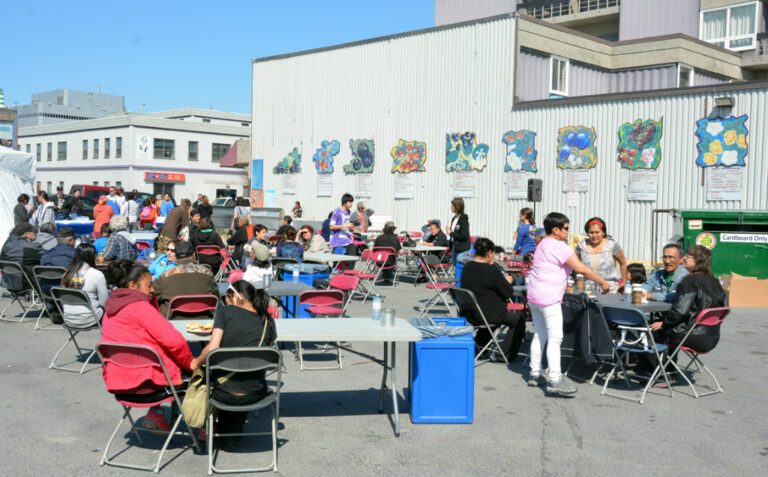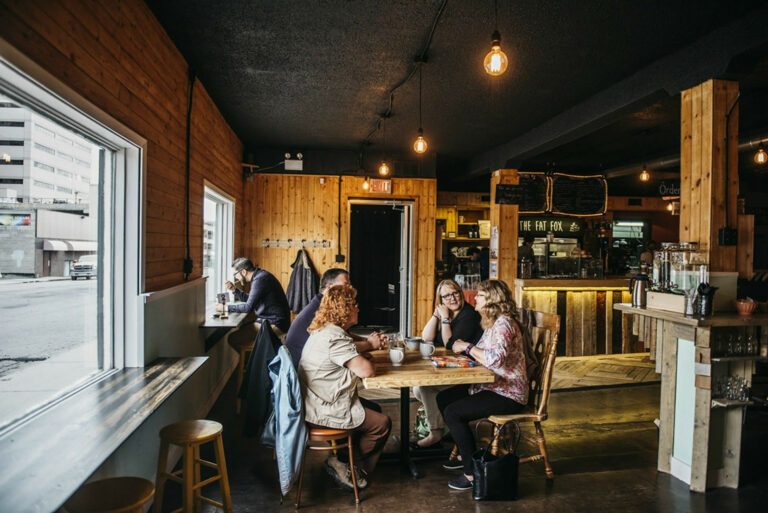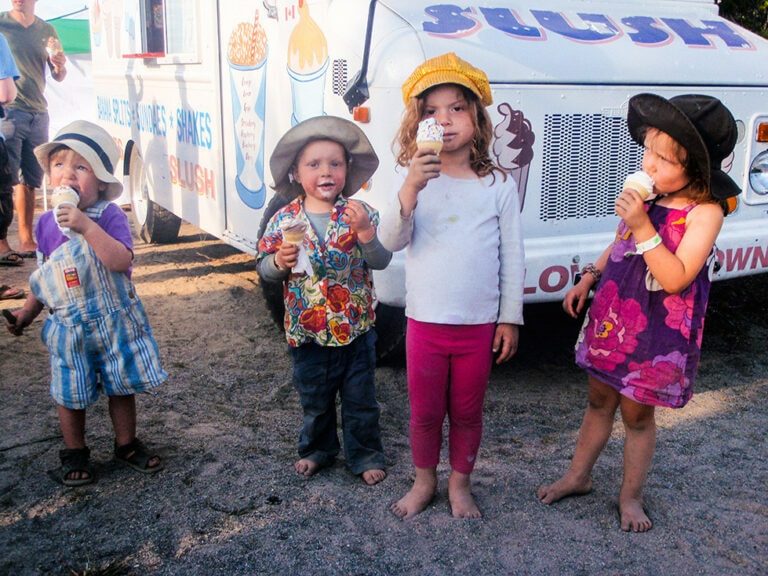Across the country, Indigenous governments are all calling for the same thing, says Valerie Courtois: the capacity to manage their own traditional territories using their own laws and values.
While many First Nations have land claims, self-government agreements and land-use plans, along with other management tools under their belts, they are often still unable put those tools into action.
For Courtois, director of the Indigenous Leadership Initiative (ILI) arm of the International Boreal Conservation Campaign, one possible answer lies in the creation of Indigenous guardian programs.
“Basically every single partner we’ve ever worked with has identified the need for a program like this,” she tells EDGE. “I can’t think of any who haven’t.”
An Indigenous land stewardship program, the guardians model (also referred to as a “watchmen” model) essentially empowers First Nations to train and hire their own park rangers, researchers, environmental monitors and resource officers, to implement conservation and land protection measures on their traditional territories.
Under the tenet of “boots on the ground and in the boardroom,” guardians are trained to take care of the land using traditional laws and values, while also being able to translate that traditional knowledge into the policy language needed to create formal, enforceable agreements with governments and industry on everything from protected areas to forestry to harvesting.
“We used to say during the Innu land claim process that ‘Today’s guardians are tomorrow’s ministers,’” says Courtois, a forest planner from northern Quebec who led the Innu Guardians program in Labrador for several years. “What better way to prepare for a job like a minister than to actually have to tackle the problem of land management at its very basic level all the way through to the negotiations stage?”
Watching the North
Through ILI, Courtois is now working with First Nations in Yukon and the Northwest Territories to spearhead similar initiatives.
The community of Lutsel K’e has created its own guardians program to assist with the management of the Thaidene Nene protected area around the East Arm of Great Slave Lake. The Ni Hat’ni Dene “Watching the Land” program, created in 2008, consists of two crews who take care of important sites, conduct environmental monitoring and interact with visitors over the summer — a job that will eventually become year-round, once the national park is formed.
The Dehcho First Nations (DFN) are following suit, with plans to establish a Dehcho K’ehodi “Keepers of the Dehcho” program. With a land claim, land-use plan and a number of protected areas nearly finalized, DFN wants to establish a network of “moccasins on the ground” responsible for managing those territories. The specifics of that program are still under discussion.
The community of Deline is the latest to jump on the guardians bandwagon in the NWT. Their self-government agreement officially kicks in this fall, and a stewardship council has already been formed to link together the regulatory and governing bodies with Elders and youth in order to manage the research, monitoring, enforcement, cultural and tourism aspects of their burgeoning conservation economy. The community hopes those tasks will be carried out by a community network of guardians, including youth, who will be paid to take care of the land.
Creating Northern guardians
The Kaska Dena Council in the Yukon has taken the lead and is working together with First Nations from the NWT to establish a Northern network of guardian programs. Representatives from First Nations from both territories met last summer on the Yukon-NWT border to begin the training necessary to start their own guardian initiatives.
The first part of the pilot training program was designed by the Dechinta Centre for Research and Learning, a land-based university in the NWT, and was rolled out in the Mackenzie Mountains at the Dechenla Lodge. The second half of the pilot will be rolled out this fall at Dechinta at an out-camp near Blachford Lake.
Daniel T’Seleie of Fort Good Hope was one of the program instructors, teaching a course in sustainable community organization. He says the mix of on-the-land skills and academic coursework was designed to train people not only how to live on the land, but to articulate their community’s philosophies to a broader audience.
“It’s important for them to get those critical thinking skills and those analytical tools to be able to help them facilitate broader discussions in their communities about what is guardianship, what are the threats to the land, and how do we actually protect the land,” T’Seleie says. “Once people have those tools, the tools to really analyze a problem and facilitate discussion around a problem, that’s when you can find productive solutions at a community level in a way that involves the whole community.”
Ted Mackeinzo of Deline, now 22, was the youngest participant in the pilot, which he said significantly boosted his leadership and facilitation skills. Now assistant to the manager at the Deline Renewable Resource Council office, he is responsible for serving as liaison between outside researchers and Elders and land-users from the community.
“There’s a barrier between out-of-town researchers and Elders. I consult and work with both sides,” he says. “I’m helping when they’re researching or monitoring out on the land. They talk to me and the Elders talk to me and I kind of help translate.”
Mackeinzo wants to see a guardian program finalized in his community to implement the community’s watershed and wildlife management plans, and so that youth like himself can get more on-the-land experience conducting monitoring, assisting researchers and learning from Elders.
“I grew up without a father or any role models, so everything about my tradition I had to learn on my own. It’s tough when you don’t know where to go for the best time of year for seasonal animals. The guardian thing would help a lot with people like me and younger youth who don’t necessarily know what to do on the land. They could go out, monitor and learn something and make a future career out of that,” he says.
“The way I see it that we’re the ones who have to watch [the land] for the unborn generations coming up in the next 10 to 20 years. We have to protect it so that our cultural heritage and traditions can stay alive.”
Proof of success
The North’s guardian programs are not being created out of thin air. Canada is already home to three successful long-term Indigenous ranger groups, including the Innu Guardians, the Haida Watchmen and the Coastal Guardian Watchmen Network in B.C.
Those programs, in turn, are emulations of the world’s most successful watchmen initiative. Housed in Australia, the Indigenous Protected Areas network is a partnership between the federal government and the country’s Indigenous groups, who manage parks together.
Courtois says the proven economic benefits of the Australian program show that for every dollar invested in guardians, the country saves three dollars in programs and services. Apart from employment, it’s had a marked impact on reducing incarceration rates and improving education levels, and ranger jobs have the highest retention rate for Indigenous people in the country.
While the benefits of guardians initiatives in Canada have yet to be quantified in the same way, Courtois says it’s easy to see how they have benefitted peoples and regions through capacity building. She says the Innu Guardians program shaped Labrador’s political landscape for the better since its inception in 1992, designing Indigenous-led monitoring programs at mining and hydro operations, and helping to develop a forestry co-management agreement with the province of Newfoundland and Labrador — the first of its kind in Canada.
“It puts the nation in a much better position to have those conversations, like, say, caribou management, which is a big issue right now in the Northwest Territories,” Courtois said. “Colonial, provincial models of interacting with communities is to inundate them with complicated data, not talk about how that data was derived, and then have management actions essentially imposed. It’s very hard for First Nations to address that approach without having a counter-argument… But if the guardians can take Elders’ concepts, like ‘the caribou will return,’ and elaborate on what that means biologically, then you can have a conversation.”
Leading from the North
Apart from the three existing guardian programs, which serve as geographical parentheses on the East and West Coasts of Canada, the only other place where work is now being led is in the North.
Courtois is hoping to change that. By partnering with Dechinta on the creation of a guardian training curriculum that can be taught nation-wide, she hopes the Indigenous Leadership Initiative will be able to help First Nations across the country set up their own models for land stewardship.
That means the North could play a critical role in assisting other Indigenous communities in getting similar programs off the ground, especially where management tools like land-use plans and resource agreements aren’t in place, or where governance is an issue.
While the plan hinges upon possibly tens of millions in federal funding, Courtois says guardian programs also assist governments in meeting their obligations when it comes to things like resource management and enforcement.
In the meantime, Courtois said ILI is consulting with Indigenous nations across the country, including those in the North, to ensure the ask they make of the federal government will serve the needs of communities.
“That process will likely conclude around the same time as the second part of the pilot, which means we will have a completed package to take to the federal government.”







